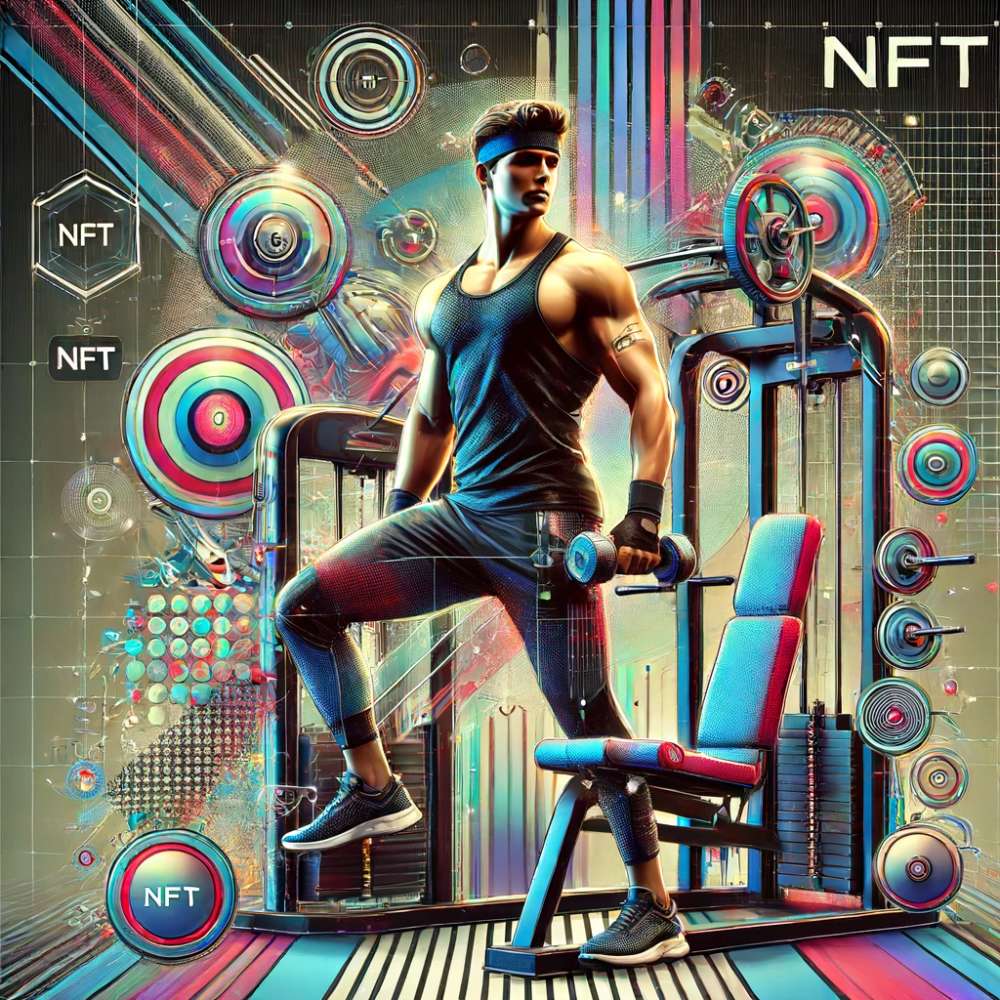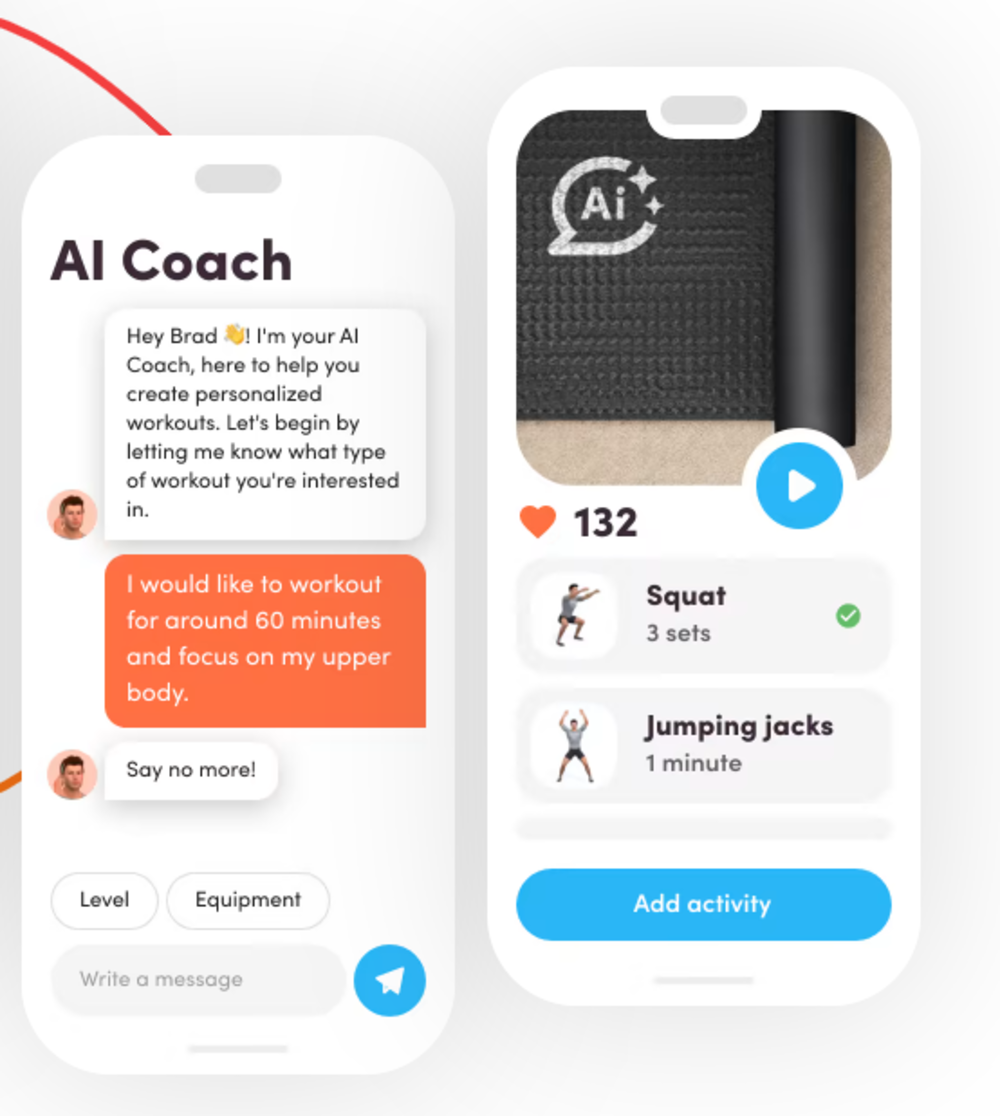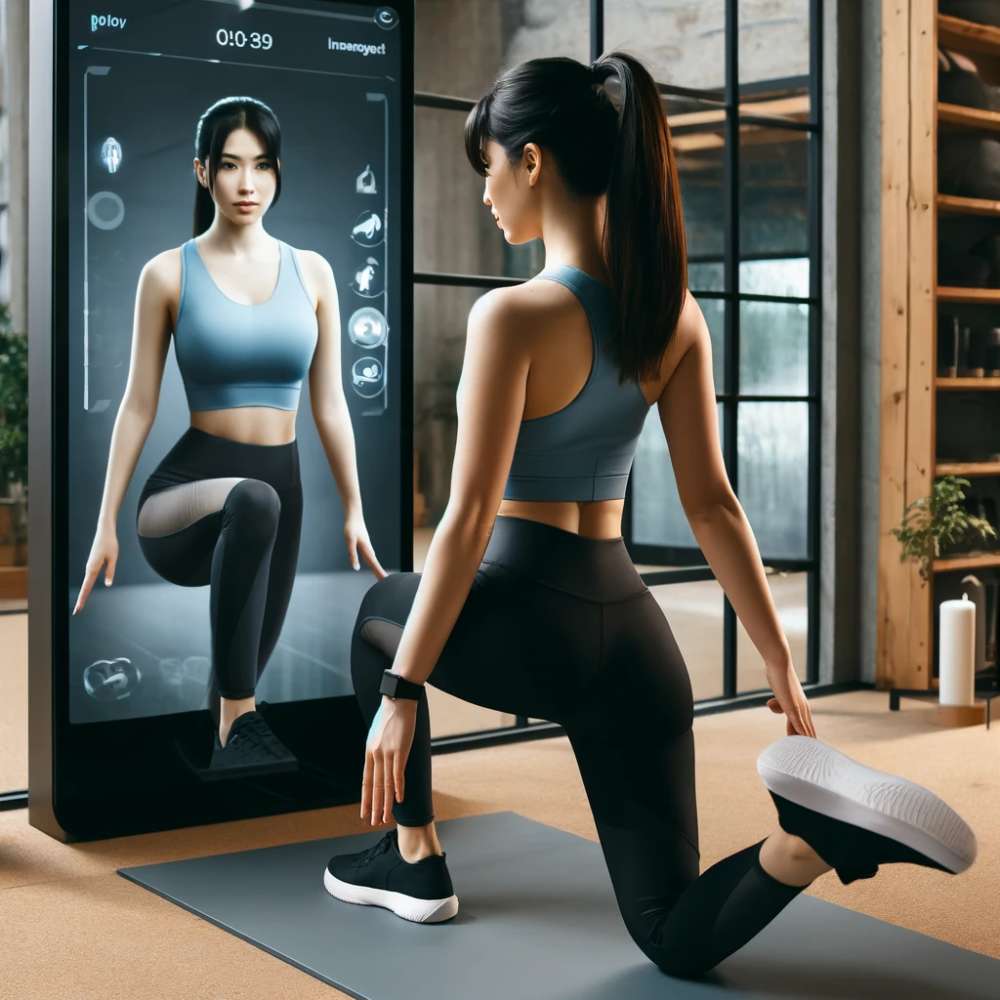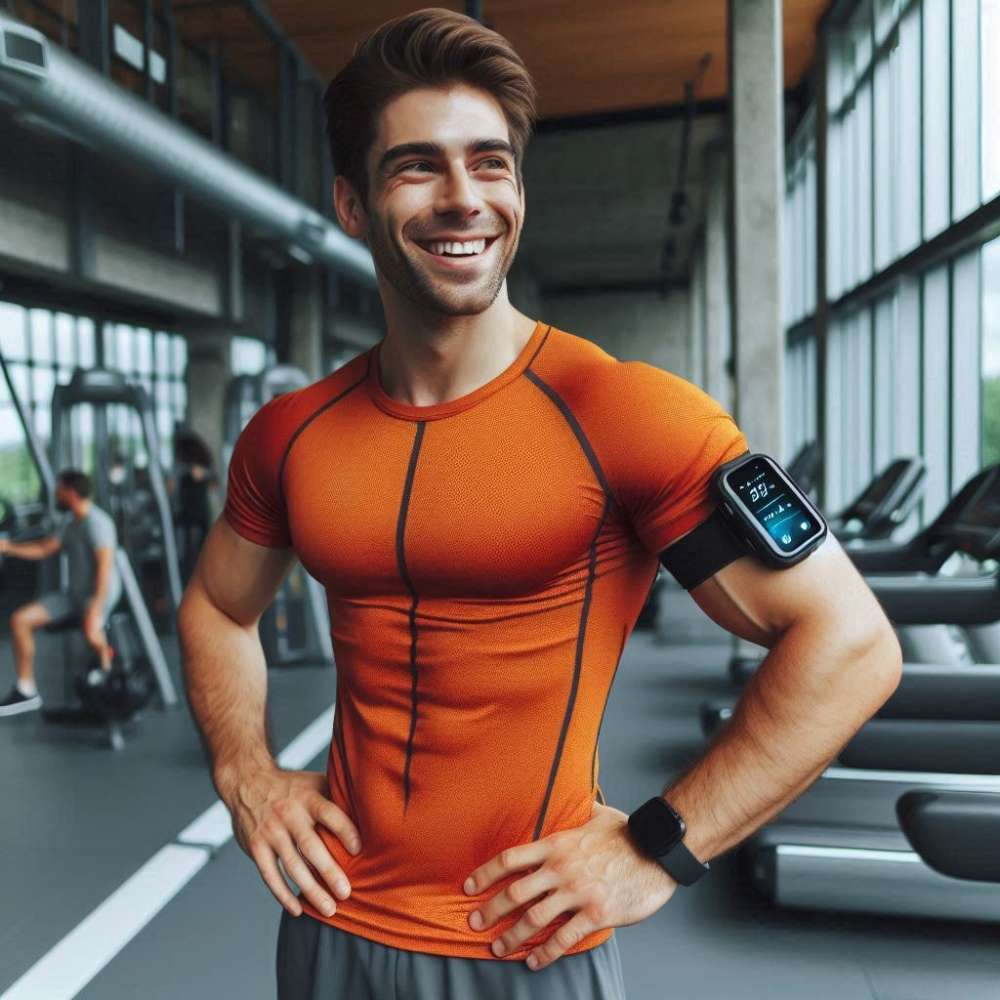The fitness industry is always changing and upgrading itself, thanks to new technologies that is released every year which transform how gyms operate and how members use these tech.
In 2025, AI has emerged as the new must-have technology for forward-thinking gyms and fitness studios.
From intelligent workout planning tailored to each individual to AI-powered form coaching and dynamic adjustments during sessions, this cutting-edge technology promises to supercharge results and engagement like never before.
In this article, we’ll explore the top fitness industry trends that are becoming mainstream in 2025 and how you can use them to create a high-tech, high-motivation environment that keeps your members coming back for more.
1. The Use of VR Headsets

Research shows that the global market for VR fitness games was worth $116.7 million in 2023. It is expected to grow to $1042.8 million by 2030.
Gone are the days, when a gym member simply runs on a treadmill or cycled on an air bike with their headphones on.
As of 2025, immersive fitness experiences such as wearing a VR headset while running on a treadmill is becoming more and more common.
With the use of VR headsets and sensors, you can transport members into digital exercise worlds that feel totally real.
For example, you could have a boxing class where the members are wearing VR headsets and actually see and interact with a virtual opponent they have to punch and dodge.
Or a running class on curved treadmills where the VR makes members feel like they are trailing running through forests, cities, or other outdoor environments.
The immersive nature of VR makes boring cardio exercises feel like exciting adventures or like a game, which can also positively impact mental health.
Some VR companies are also offering multi-player VR games and activities that you can use to get groups of members moving and burning calories together in friendly competition while in the virtual world.
The more realistic and interactive you can make the experience through VR, the more engaging and fun it is for members.
For more information on VR-based exercises, feel free to check out our guide on that here.
2. Automated Gym Features

According to a McKinsey report, 31% of businesses have fully automated at least one function.
In 2025, it is expected by potential members for fitness facilities to offer some form of automation for ease of access.
This can be a mobile app check-in that allows members to skip the front desk by using their smartphone to scan in and retrieve a digital locker assignment and entry.
Or it can be all-in-one gym management software, where you can handle everything about a member, from keeping them engaged to scheduling classes to seamless payments.
Additionally, you could explore partnerships with local businesses to offer worksite health promotion programs, integrating fitness apps with social features to engage employees.
Automation in gyms isn’t a new trend but with each year the expectation of having advanced features by customers looking to join a gym is going up.
Automation allows you to reduce staff needs while improving the member experience.
So this year you can use new automation technologies to create smoother, easier experiences for members from the moment they arrive.
3. Workout NFTs and Web3

Your gym can tap into the web3 trend by offering non-fungible token (NFT) workout experiences.
These are limited edition, collectible workout classes or training programs led by celebrity trainers/personal trainers that are minted on the blockchain.
Members would purchase the rights to access these premium NFT workouts anytime through your app or gym kiosks.
You could sell just 1000s NFT copies of a premium class by an Olympian, for example.
Those holders get exclusive access, plus cool perks like the ability to flex the NFT artwork/credentials, community access, merchandise, etc alongside personalized personal training sessions.
This creates a lucrative model beyond standard memberships, transforming your fitness business.
Your gym can also develop a presence in the metaverse - setting up a virtual gym space where members can work out from home but still be part of the community, providing online training options.
Or even host fully virtual fitness challenges and events in the metaverse.
Web3 technologies allow creative ways to engage the digital-native generation.
4. The Use Of AI

One of the biggest tech trends in 2025 is using AI to customize each member’s fitness plan.
For instance, take Virtuagym’s AI coach. Members can start using this AI coach just by starting a chat.
They answer some questions about what kind of workout they want, and quickly, they get fitness programs made just for them.
This lets gym owners offer different membership levels. For example, for an extra $20, members can access the AI coach anytime they need.
AI technology is going to keep growing every year. As a gym owner, you should start using AI, whether it’s through an AI coach or a chatbot to handle questions on social media.
Check out how you can maximize your revenue with AI.
5. Smart Home Gym Equipment

The demand for home workouts has surged in recent years, leading to the rise of smart home workout equipment retailers.
These devices, such as smart treadmills, bikes, and strength machines, offer interactive features, connectivity, and on-demand classes.
Brands like Peloton, Tonal, and Mirror have revolutionized home fitness by providing high-quality equipment with integrated screens and real-time feedback from fitness professionals.
Smart home gym equipment, such as smart treadmills, bikes, and strength machines, offers interactive features, connectivity, and on-demand strength training classes.
The ability to participate in live and on-demand classes, track progress, and receive personalized coaching makes home workouts more effective and enjoyable.
As technology advances, we can anticipate further innovations in smart home gym equipment, enhancing the home workout experience even more.
6. Sustainable, Connected Equipment

Global warming is no longer a topic that politicians debate during elections.
A large portion of the population is becoming more and more aware of their impact on their environment and they show willingness to reduce their impact to accelerate climate change.
A voice of consumer survey study found that 80% of consumers are willing to pay 9.7% more for sustainably produced or sourced goods.
This shows the rise in the need for equipment that is eco-friendly.
And you can take advantage of it by doing the following things for example:
- Self-powered cardio machines: Treadmills and ellipticals that generate electricity through user movement.
- Low-energy strength equipment: Features like Bluetooth connections for syncing workout data with minimal power usage.
- Sustainable materials: Recycled rubber for flooring and eco-friendly foam formats.
- Natural light: Large windows to maximize daylight, reducing the need for artificial lighting.
- Reusable water stations: Encourage the use of refillable bottles instead of single-use plastics.
- Indoor plants: Improve air quality and create a calming, natural aesthetic.
These eco-friendly features not only contribute to the environment but also appeal to members who value sustainability, making the gym a more attractive and conscientious place to work out.
To help get you started, here are tips for becoming an eco-friendly gym.
7. Biohacking

Biohacking is steadily becoming more popular, especially among young people who are interested in using science to improve their health and well-being.
If you didn’t know, biohacking is basically people making data-driven upgrades and experiments on their own biology and bodies.
When it comes to fitness, biohacking is about using certain techniques and technologies with the goal of maximizing human performance, recovery, and overall training capabilities.
For gyms, this could involve providing members with detailed biometric data tracking and analysis through wearable sensors.
Things like precise muscle activation metrics, biomechanics assessments, recovery biomarker tracking, and genomic/epigenetic profiling.
The gym can then use AI and machine learning to analyze all this data about the member’s physiology and biology.
Based on the analysis, the gym provides hyper-personalized biohacked training regimens designed to maximize that specific individual’s fitness potential.
Members can get deep insights into optimizing their exercise efficiency, nutrition, sleep, and other lifestyle factors.
The goal is reaching true peaked conditioning and human performance through these advanced biological hacking techniques.
By taking advantage of this growing trend gym owners can aim to stand out among their competitors by attracting more of the younger population.
8. Recovery Equipment

Gyms have started to invest heavily in cutting-edge recovery equipment and technologies to offer special care for their member’s recovery and regeneration.
Take a look at Ten Health & Performance, members can use facilities like whole-body cryotherapy chambers that use extremely cold temperatures to reduce inflammation and muscle pain.
Or places like Revibe Wellness who offer affordable memberships focused solely on recovery using compression boots, infrared saunas, hydromassages, and other modalities.
The recovery equipment is often paired with personalized compression wear, supplements, and nutrition/hydration guidance for fully maximizing the regeneration process.
This is another trend which when implemented can help you stand out in a saturated fitness market.
In 2025 the focus isn’t only on lifting heavier and getting stronger but also on recovery and staying injury-free.
9. Fitness Apps with Social Features

Social interaction is a powerful motivator in fitness, and many fitness apps are incorporating social features to enhance user engagement.
These features include challenges, leaderboards, community support, and the ability to share achievements on social media.
Fitness apps like Strava, MyFitnessPal, and Nike Training Club are using social elements to create a sense of community and accountability among users.
The benefits of social fitness apps extend beyond motivation; they also provide users with a support network that can help them stay committed to their goals.
Engaging in challenges and tracking progress alongside friends or a larger community adds an element of fun and competition.
As social features become more prevalent in fitness apps, they will continue to play a crucial role in driving user engagement and adherence to fitness routines.
For more insights on fitness apps, please read this guide here.
10. Fitness as a Game

Turning exercise into a game is a trend that’s growing rapidly.
Many fitness apps and programs now include fun elements like earning points, collecting badges, and competing on leaderboards.
This gamification makes working out more exciting and motivating, as you can see your progress and achievements in a fun way.
Some apps even let you compete with friends or family, adding a social aspect to your fitness routine.
This way, you can challenge each other and share your successes, making exercise a more enjoyable and interactive experience.
Additionally, competitive gaming, known as eSports, is becoming more popular, with tournaments for games that involve physical activity and strategy, offering a new way to stay active and entertained.
11. Wearable Fitness Technology

Wearable fitness technology has become an integral part of modern workouts, with devices such as smartwatches, fitness trackers, and smart clothing providing valuable health insights for exercise professionals.
These wearables track a range of metrics, including heart rate, sleep quality, stress levels, and VO2 max, offering users a comprehensive view of their health and fitness.
The integration of wearable tech with fitness apps enhances the user experience by providing personalized coaching and recommendations based on real-time data.
For example, the latest smartwatches from brands like Apple, Garmin, and Fitbit offer advanced health monitoring features and seamless connectivity with fitness platforms.
As wearable technology continues to advance, we can expect even more sophisticated features and greater accuracy in tracking and analyzing health data.
12. Augmented Reality Coaching

While virtual reality creates fully digital workout worlds, augmented reality (AR) enhances the real-world gym experience through data visualization.
With AR-enabled glasses or just a smartphone, members can access augmented coaching and guidance.
The AR display could show you your workout for the day, provide exercise demos, map trails for movement directly onto the gym floor, and give you real-time feedback on your exercise form using motion tracking.
It creates an engaging guided experience.
Some gyms are also using AR for games and challenges where you have to hit certain movement targets displayed in the gym space.
13. Smart Gym Apparel and Equipment

Workout apparel and portable equipment now have embedded tech that tracks biometrics, movement, and muscle activity to enhance exercise effectiveness.
This smart gear syncs to gym apps to provide insights.
One example is Hexoskin, which makes smart shirts with built-in sensors in the fabric.
These sensors track important health data using built-in ECG and respiratory sensors, along with an accurate “activity sensor” to check your physical performance.
Another innovative product in this domain is the Prana Wearable. This device is made to monitor controlled breathing techniques and posture, giving feedback in real-time.
It’s used in both research settings and at home to watch how well you maintain your posture and breathing patterns during exercises.
These products are at the forefront of wearable technology in fitness. They combine the ease of wearing clothes with the capabilities of health monitoring devices.
They’re part of a growing trend of smart clothes that aim to improve health, fitness, and overall wellness.
14. Hybrid Workout Spaces

Hybrid workout spaces combine the best of both in-person and virtual fitness experiences, including online fitness training sessions.
These spaces allow fitness enthusiasts to participate in live classes at a studio or join virtual sessions from home.
The hybrid model caters to the diverse needs of users, providing options for those who prefer the social aspect of in-person workouts and those who enjoy the convenience of virtual classes.
Successful hybrid fitness models, such as those offered by Barry’s and F45, provide a seamless transition between physical and virtual workouts.
The ability to access a variety of classes and programs, regardless of location, enhances the overall fitness experience.
As the demand for flexible workout options grows, hybrid workout spaces will continue to gain popularity in 2025.
15. Unique Fitness Experiences

Gyms are not just places to work out anymore; they are creating unique and memorable experiences to attract members.
This is part of the “experience economy,” where businesses focus on providing special services rather than just selling products.
For example, some gyms offer cycling classes that feel like competitions with stadium-style seating and leaderboards.
These classes allow you to compete with classmates, making the workout more engaging and fun.
Other gyms provide group workouts that use advanced technology, such as real-time heart rate monitoring, to track your progress during the session.
This technology gives you instant feedback and helps you tailor your workout to your personal needs, making each session more effective and personalized.
Conclusion
The world of fitness has embraced technology in exciting ways, offering new opportunities for people to stay active and healthy.
From wearable devices that track our every move to interactive apps that provide personalized coaching, technology has made it easier than ever to set and achieve fitness goals.
As these trends continue to evolve, we can expect even more innovative solutions that seamlessly integrate physical activity into our daily lives.
Ultimately, The fusion of technology and fitness empowers more people to take control of their well-being and cultivate sustainable habits for a healthier future, ultimately enhancing physical health.




